We finished a 1200+ nautical mile passage from Tahiti to Niue in almost 8 days (184 hours) last week, averaging 7 knots / 8.1 statute miles per hour / 13.1 kilometers per hour. Welcome to life in the “not-so-fast” lane.
A monohull displacement boat’s maximum hull speed is determined by its length at the waterline. For Blue Pearl, a Hylas 54, LWL is 49 feet, giving It a maximum boat speed of 1.3 √49= 9.1 knots. Hull speed is the theoretical maximum speed a sailboat can travel at without a little help from your friends current (riding a favorable tidal or river current), waves (surfing down the front of a wave) and the iron jib (motor sailing with the engine engaged). For a purist, hull speed is the goal, and it’s hard to reach and difficult to sustain.
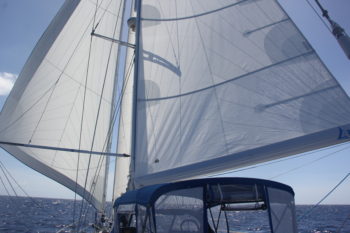
9.1 knots is 10.5 statute miles per hour, or 16.9 kilometers per hour. There are times that feels very fast, like when you’ve just weighed anchor and are sailing close hauled, everything sheeted in tightly, traveler up, wind in your face and a long passage ahead of you. There are times when that feels terribly slow, like when you are almost done with a long passage, and you are entering a tight cut with breaking waves on either side of you, a strong current running against you, engine screaming, holding on to the helm white knuckled, praying to Netpune to just let you get through and get the anchor set. A dolphin off Galapagos kept darting from our stern to our bow and back again, appearing to say, “Look at me! I swim faster than you sail!” The racing sailboat docked next to us in Tahiti reported sailing at 25k/29mph/46kmh regularly. It’s all relative, and compared to petroleum-fueled modes of transportation, none of it’s very fast.
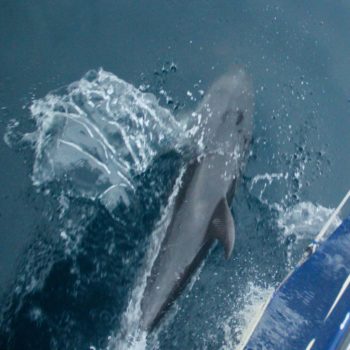
9.1 knots means you can sail 218 nautical miles / 251 statute miles / 404 kilometers in 24 hours. Realistically we expect to average 6.5k/7.5mph/12kmh and therefore plan our passages expecting 156nm/180mi/289km a day. Shinkansen trains in Japan travel that distance in just over an hour, and an airplane does it in less than half an hour. But in a sailboat crossing the Pacific, you’ll never get jet lag crossing a single timezone every few days or so. And that’s worth the wait in my book (ok, that plus the moon and sun sets and rises, the dolphins, the sound of the wind in the rig and the feel of the waves along the hull, but only that).
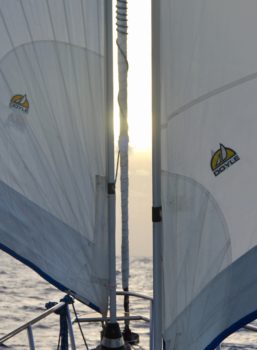
There are lots of things slowing us down out here. The fastest point of sail is wind at 80º to the sails (somewhere between a close reach and a beam reach); downwind is the slowest. Crossing the Pacific east to west, we’ve had the easterly trade winds on our aft quarter most of the way, keeping us far from reaching hull speed. There are also considerable ocean currents out here, dragging our speed over ground (SOG) noticeably below our speed through the water. My rule of thumb is that if our SOG isn’t faster than my average running speed (4.8k/5.5mph/9kmh), it’s time to engage the engine. I’m not a fast runner, and getting slower with age and tropical latitudes, so that’s really not asking much. I like to go slow just as fast as I can.
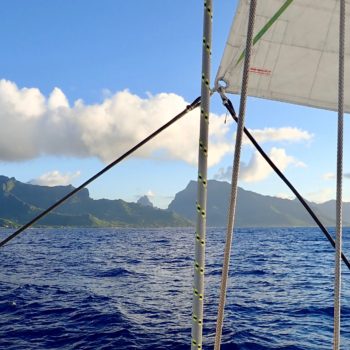
Cruising on a sailboat is not for the impatient or the adrenaline seeker. But if traveling at five to ten knots thousands of nautical miles across oceans sounds good to you, come sail with me.

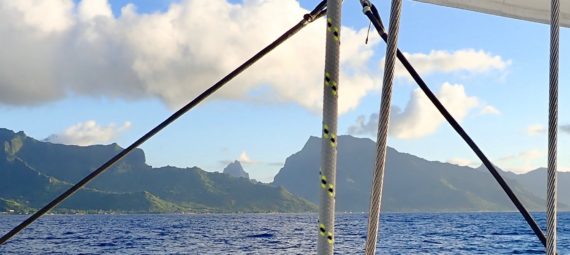
Brita – I love your updates – SWF
Enjoying your writing … Adventure on!!